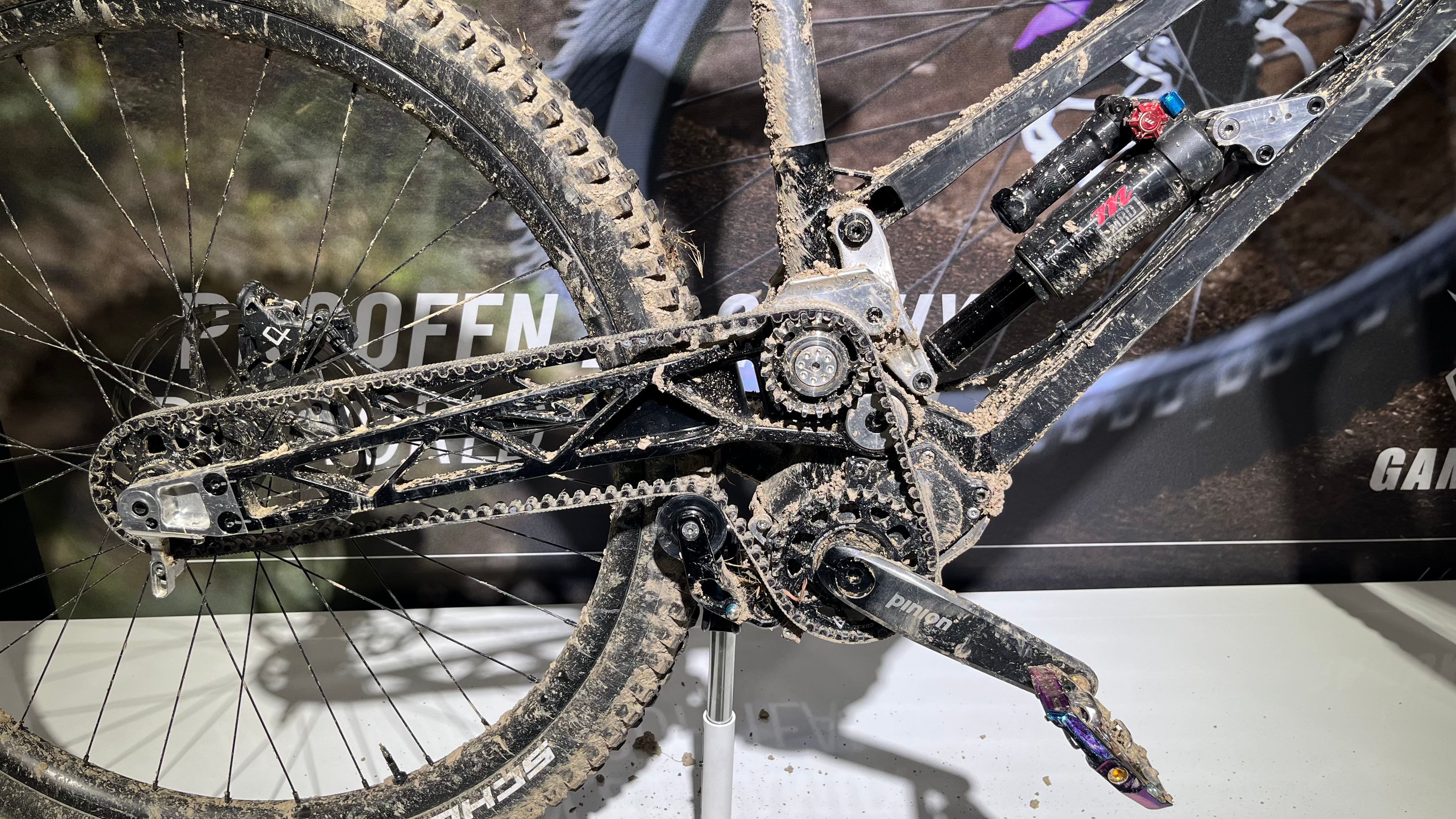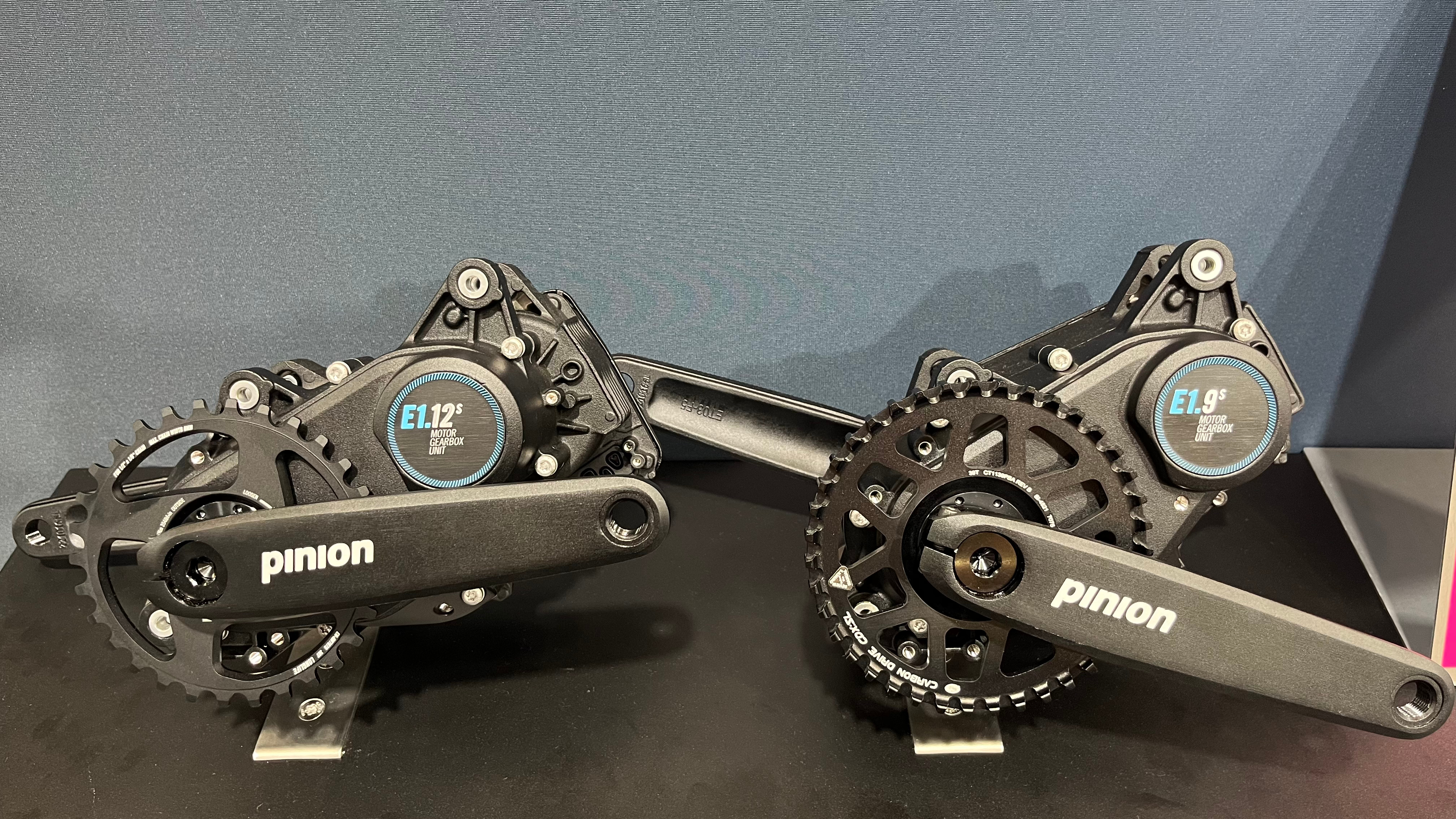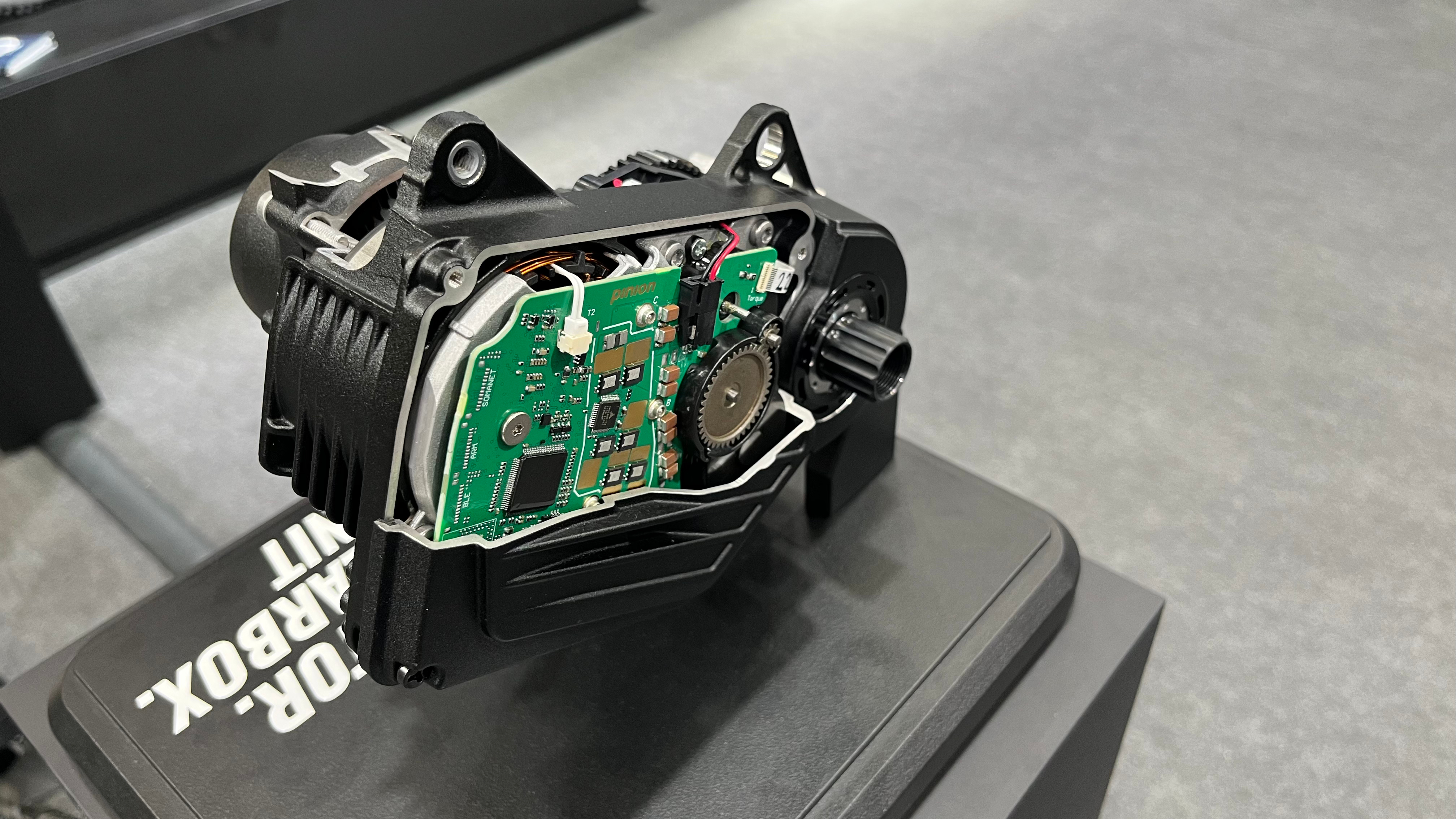Will Pinion's new MGU combined motor and gearbox system be the future of e-MTB?
The phrase game changer is used too often, but the new e-bike-specific drive/gear system from Pinion could be just that

Gearboxes for bicycles are not new. They have been a few brands trying to implement them in the industry for several years, including Zerode with the Katipo we’ve tested recently. The first Pinion gearbox was developed by two young engineers working for Porsche in 2009, with the current systems hitting the market in 2017.
Fitting a gearbox to a mountain bike instead of using a standard rear derailleur, chain, and cassette setup gives some potential desirable upsides. First, as the gears are completely sealed away from the elements, they are virtually service free – Pinion recommends an oil change every 10,000 miles. Second, by not having a rear derailleur hanging out the back of your bike, you are less likely to damage it on rocks or obstacles on the trail. The third major benefit is it can reduce the unsprung weight of your MTB. The cassette and rear derailleur adds quite a bit of weight to the rear of your bike, which has a knock-on effect on how your rear suspension works. This weight is referred to as unsprung mass, and reducing it has a significant effect on traction and how your suspension feels.
The existing Pinion system isn't without its issues though, most of which were due to having to use a double cable, Gripshift-style lever that is cumbersome and far less ergonomic than trigger shifters. Not being able to change gear under load when climbing is also a big problem and means the system hasn't been widely accepted by trail riders.

Enter Pinion MGU
We took a look at Pinion's latest development at the Euroboke show – the MGU (Motor Gear Unit). It's a new e-bike motor combined with a gearbox which Pinion refers to as a Powertrain. It comprises of a motor, an updated version of their gearbox technology, and a battery with a head unit supplied in conjunction with the German brand FIT.
The new motor is a wear-free brushless model originally designed for industrial applications but modified by Pinion with stronger magnets and optimized size-wise to fit a range of bikes. Interestingly most e-bike motors have their background in automotive or industrial usages. The first motors from Bosch and Brose were developed from power steering and washer pumps.
The MGU system offers 85Nm of power which is the current sweet spot for e-MTB motors. However, that figure doesn't paint the whole picture. The standard Newton-metre figure we use is based on a derailleur gear system, but as the Pinion system is a gearbox, that figure does not translate exactly. The torque figure is most useful as a point of reference, which is an impressive 160Nm. The high torque number puts the MGU up there with the best full-fat e-MTB offerings you can see in our best e-MTB motors feature and less like the current crop of lightweight options such as the Bosch SX motor.
Two versions of the Pinion MGU system will be available – Comfort and Performance. Comfort is for hybrid bikes, trekking, and touring, whereas Performance is better suited to e-MTB, offering sharper performance and different tunes designed for more aggressive use. Both setups give the rider four different support levels, Eco, Flow, Flex, and Fly. Flow and Flex are progressive modes, which means they adapt to rider outputs to try and offer a more natural feel. Eco is what you'd expect, and Fly is full power. The levels and outputs are adjustable too in the app should you not like the standard setup.

Auto-shifting
There will be two versions of the system available, the E1.9 and the E1.12. The 9-speed E1.9 option has a gear range of 568 percent with gear jumps of around 24 percent, and the 12-speed E1.12 version has a 600 percent range with smaller jumps of 17 percent. To give you an idea of what that actually means, a Shimano cassette with 10-51 teeth gives you a range of 510 percent, so the gearbox offers a significant increase in gear range.
Shifting is taken care of with the new TE1 electronic shifter which should go a long way to addressing previous criticisms, but there's a lot more to the shifting than simply going up or down the gears, as as well as a manual mode, it also has an automatic shifting option called Smartshift. The system uses various torque and cadence sensors to decide the ideal gear to be in and shifts accordingly as you pedal along. You can tweak the shifting settings via the MGU companion app.
As with existing Pinion gearboxes, gear changes can be made while freewheeling, which can be very handy for technical climbs, but you can now also shift under load too. Shifts are super quick at 0.2 seconds.

Battery power
Pinion's partnership with FIT has helped them develop MGU's batteries, software, and control units, and like all modern performance setups, the MGU system has a companion app. Within the app, you can tune the various support modes, and it also works with Abus Smart X technology which aims to offer in-built security for the bike.
Batteries for the motor unit will come in 480, 720, and 960wh versions and a range extender will be available too. All the batteries use the same size casing, making battery switching/upgrading a straightforward affair.
Rotwild, Bulls, and Simplon are the first to have bikes with the system and are expecting to have bikes fitted with MGU available later this year, but many more are likely to follow suit. This launch is definitely a big step forward for gearboxes and e-MTB, and we'll be following how brands choose to use this tech in the future.

Neal has been riding bikes of all persuasions for over 20 years and has had a go at racing most of them to a pretty average level across the board. From town center criteriums to the Megavalanche and pretty much everything in between. Neal has worked in the bicycle industry his entire working life, from starting out as a Saturday lad at the local bike shop to working for global brands in a variety of roles; he has built an in-depth knowledge and love of all things tech. Based in Sheffield, UK, he can be found riding the incredible local trails on a wide variety of bikes whenever he can
